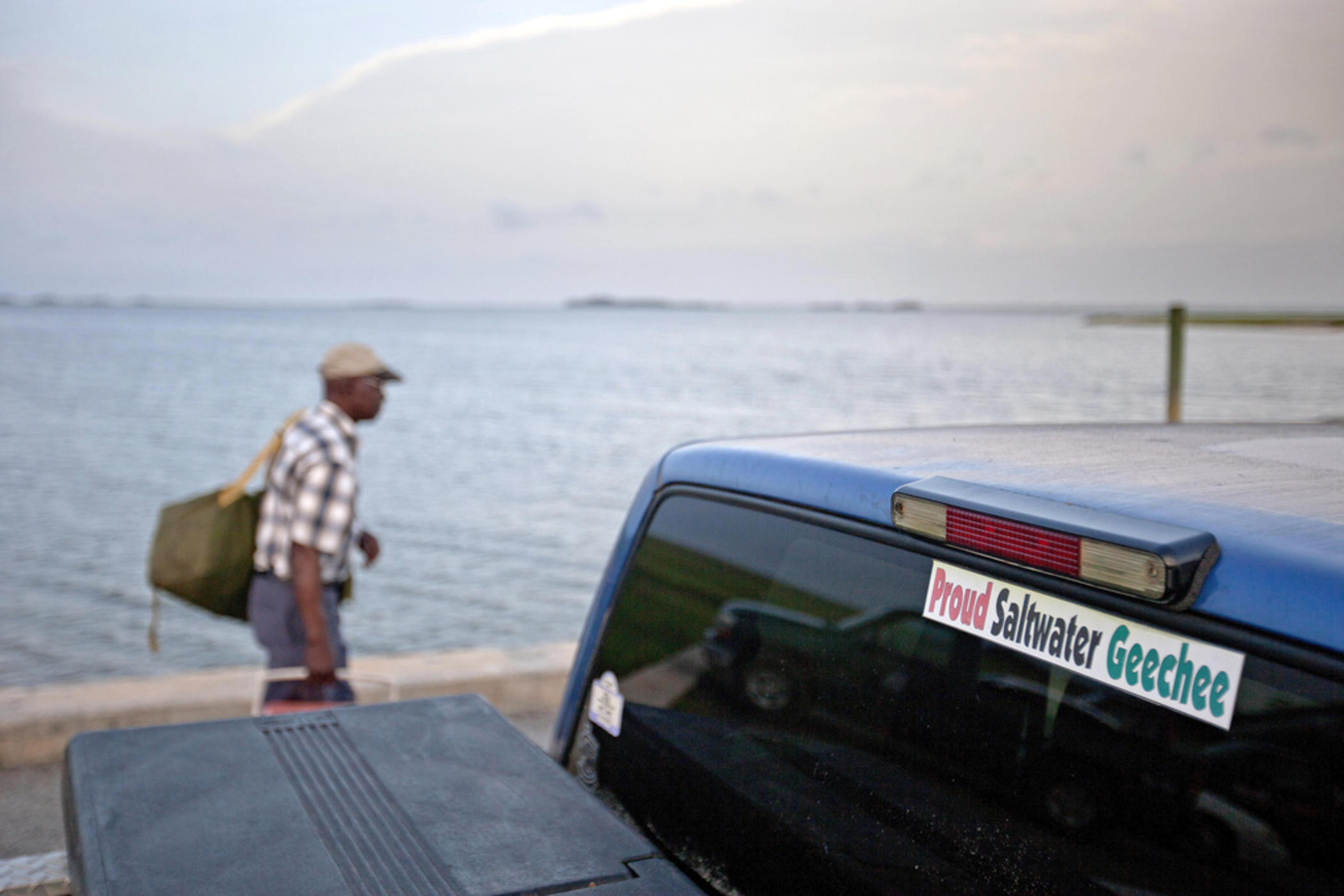Section Branding
Header Content
Slave descendants on Georgia island fighting to keep protections that helped them keep their land
Primary Content
LISTEN: A proposal to rezone a historic Gullah Geechee settlement on coastal Georgia's Sapelo Island was met with fierce opposition Thursday night. As GPB's Benjamin Payne reports, the McIntosh County zoning board heard over two hours of public comment.
___
Descendants of enslaved people who populate a tiny island community are once again fighting their local government, this time over a proposal to eliminate protections that for decades helped shield the Gullah-Geechee residents from high taxes and pressure to sell their land to developers.
Residents of Hogg Hummock and their supporters packed a courtroom Thursday night to oppose a proposal by McIntosh County officials to cast aside zoning ordinances that limit homes to modest sizes in the enclave of 30 to 50 Black residents on Sapelo Island off the coast of Georgia.
After more than 30 people spoke out against the proposal over two hours, the county zoning board made some hasty changes aimed at appeasing island residents and then voted to send the amended ordinance to McIntosh County's elected commissioners. The five-member commission has the final say, and could choose to vote on the original zoning proposal that rattled island residents when it meets next week.
The rules were enacted in 1994 for the sole purpose of protecting one of the South's few remaining communities of people known as Gullah, or Geechee in Georgia, whose ancestors worked island slave plantations. Their isolation from the mainland meant they retained much of their African roots and traditions.
Residents say losing zoning protections would drive out Hogg Hummock residents by attracting wealthy transplants eager to build large beach houses, causing land values and property taxes to soar.
"It's the erasure of a historical culture that's still intact after 230 years," said Reginal Hall, a Hogg Hummock landowner whose family has deep roots on the island. "Once you raise those limits and the land value increases, we only have two to three years at most. If you talk about the descendants of the enslaved, 90% of us will be gone."
Located about 60 miles (96 kilometers) south of Savannah, Sapelo Island remains separated from the mainland and reachable only by boat. Since 1976, the state of Georgia has owned most of its 30 square miles (78 square kilometers) of mostly unspoiled wilderness. Hogg Hummock, also known as Hog Hammock, sits on less than a square mile of modest homes amid dirt roads.
Gullah-Geechee communities are scattered along the Southeast coast from North Carolina to Florida, where they have endured since their enslaved ancestors were freed by the Civil War. Scholars say these people long separated from the mainland retained much of their African heritage — from their unique dialect to skills and crafts such as cast-net fishing and weaving baskets.
Hogg Hummock earned a place in 1996 on the National Register of Historic Places, the official list of America's treasured historic sites. But for protections to preserve the community, residents depend on the local government in McIntosh County, where 65% of the 11,100 residents are white.
The current ordinance designating a special zoning district for Hogg Hummock limits homes to 1,400 square feet (130 square meters) of heated and air-conditioned space, prohibits paving except for building foundations and requires a permit to demolish any structure deemed eligible for the National Register.
The proposed changes before zoning board Thursday would eliminate those limits on development. They also get rid of language that recognizes Hogg Hummock as a community with "unique needs in regard to its historic resources" and says the county should help prevent "land value increases which could force removal of the indigenous population."
County attorney Adam Poppell said the square-footage limit had proven impossible to enforce. The zoning board hoped to satisfy Hogg Hummock residents' concerns about supersized homes by voting to limit development to no more than 10% of a lot, as opposed to 40% in the existing zoning ordinance.
Hogg Hummock resident Jazz Watts said he felt the changes were rushed and that the zoning board should have thrown out the entire proposal.
"They need to start over," Watts said. "There are too many questions that they can't even answer."
Patrick Zoucks, the county manager, defended the zoning proposal in a statement issued before the Thursday meeting, saying it was"in the best interest of the residents of Hogg Hammock and all of the citizens of McIntosh County. "
"Nothing about this issue involves race, or the discriminatory application of the regulations," Zoucks said.
Commissioner Roger Lotson, whose district includes Sapelo Island, opposed the original proposal to eliminate the maximum home size in Hogg Hummock. He said the zoning board's changes, while welcome, seemed rushed. And he noted the county commission could reject them altogether and vote on the original plan.
"All they're doing is giving us a recommendation," Lotson said.
It's not the first time Black residents of Sapelo Island have battled with the county government.
Some families have sold to outsiders who built vacation homes. In 2012, dozens of Hogg Hummock residents and landowners swarmed the county courthouse to appeal painful tax increases caused by soaring property values. County officials rolled most of them back.
Residents then sued the county in federal court in 2015, arguing a lack of government services such as firefighters and trash collection were eroding the island community. The case was settled last year, with McIntosh County agreeing to improve emergency services and road maintenance. Some residents also had their property taxes frozen through 2025.
Lotson said he's unsure how his fellow commissioners will vote, though he's trying to persuade them that Hogg Hummock is worth preserving.
"It's a step back in time," Lotson said. "And the fear of many, including myself, is that by allowing any size house over there, soon the uniqueness of Sapelo will go away."



